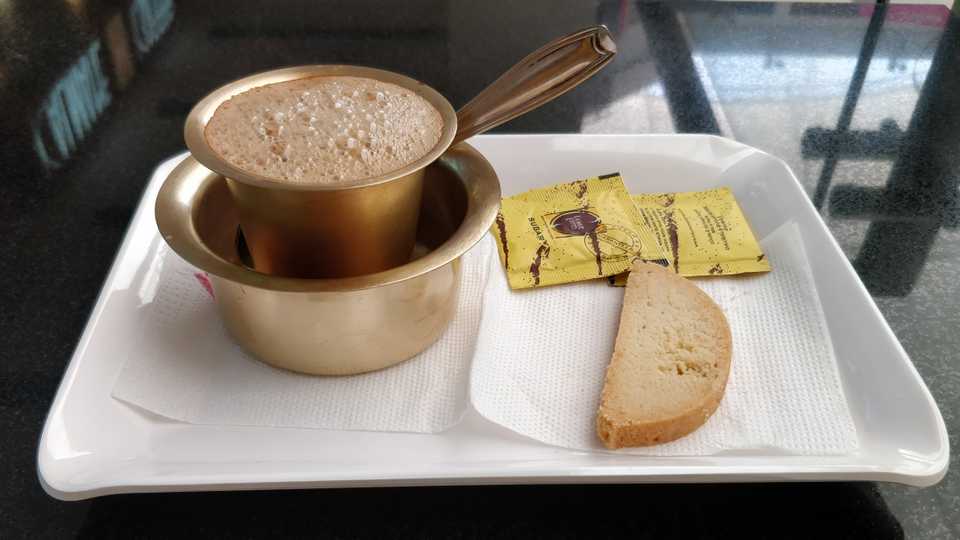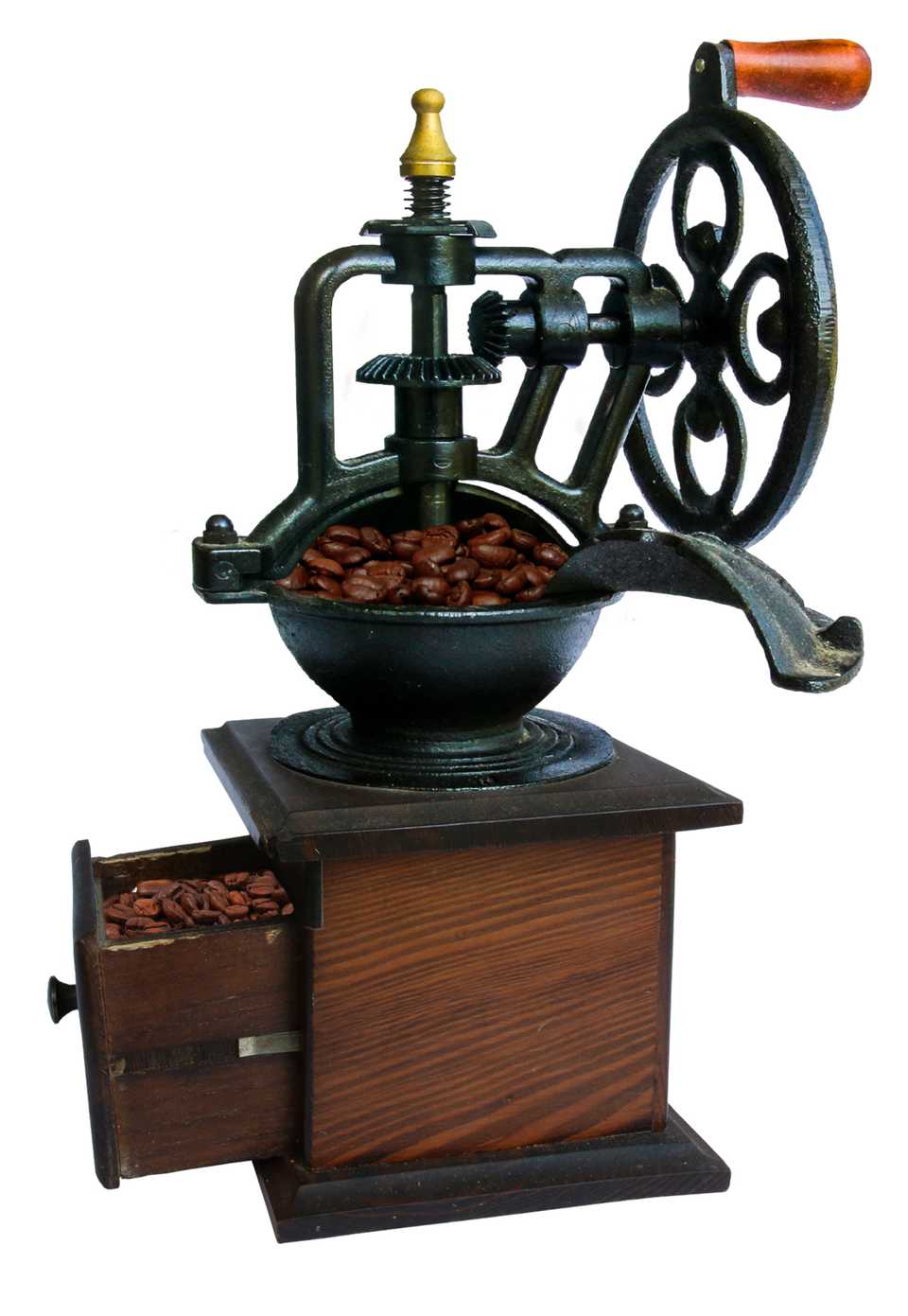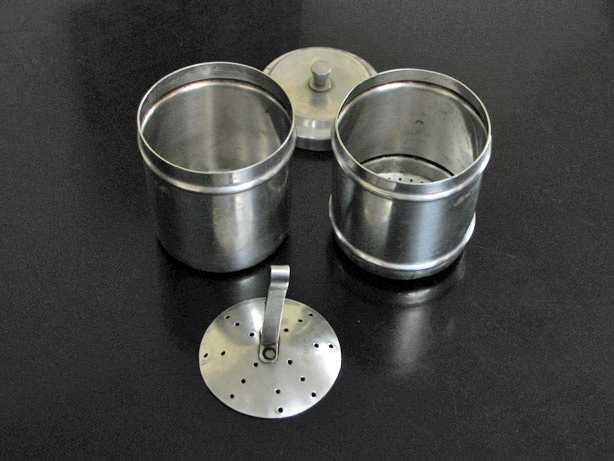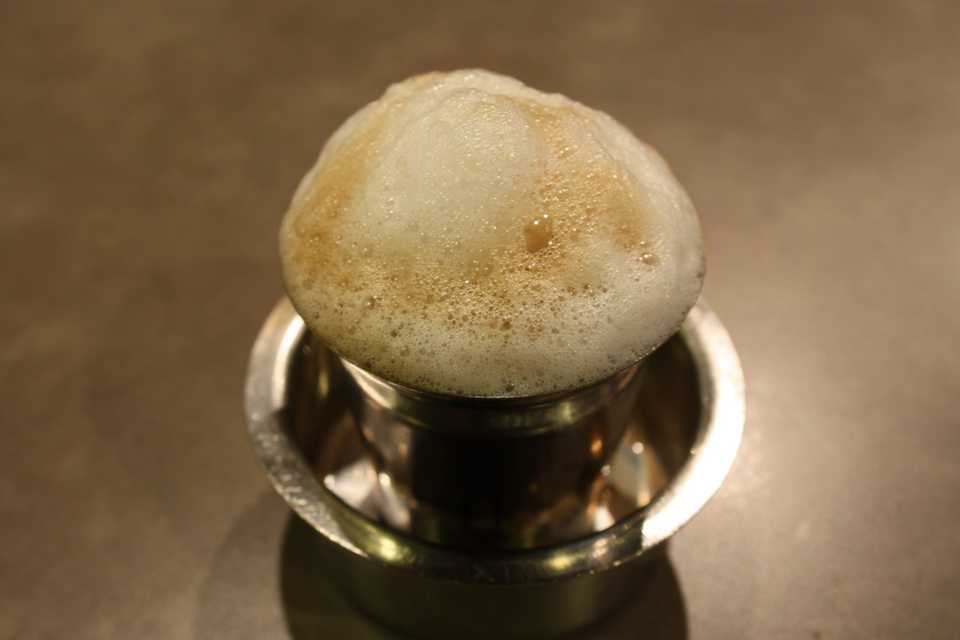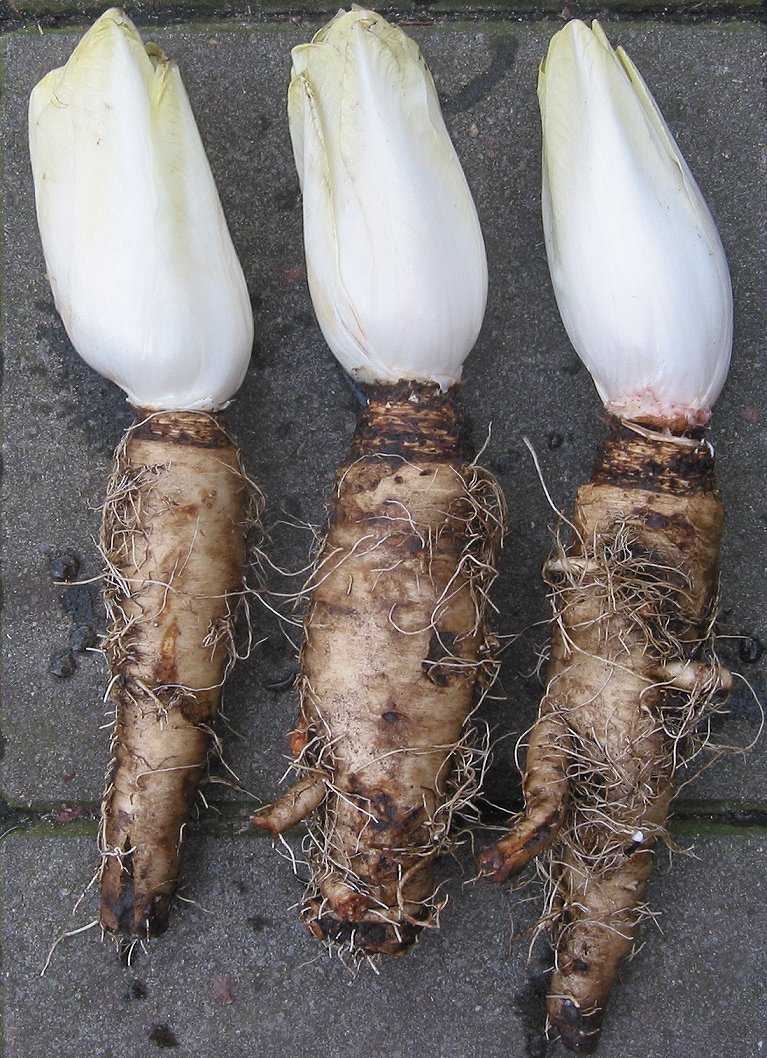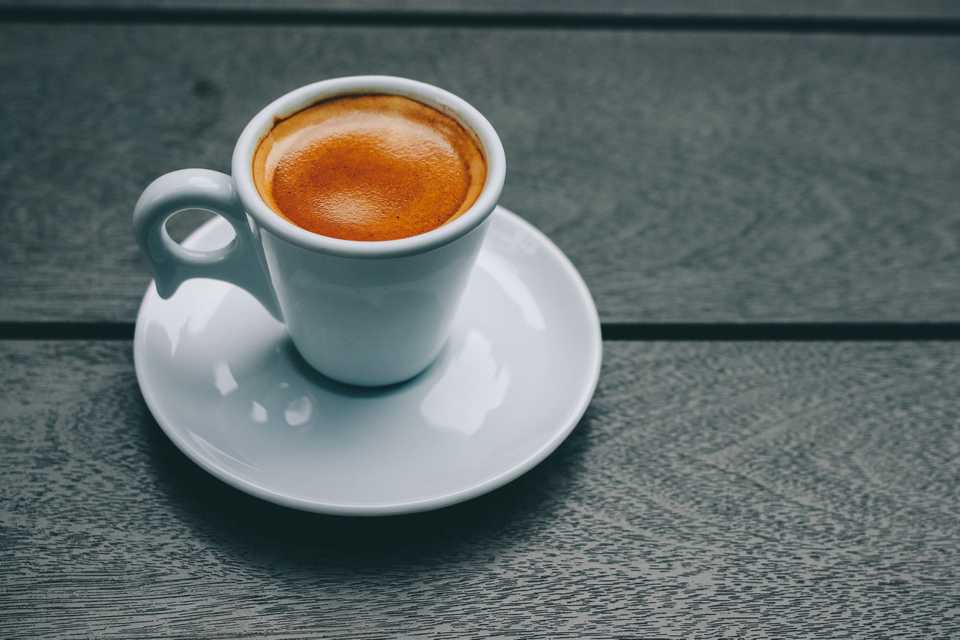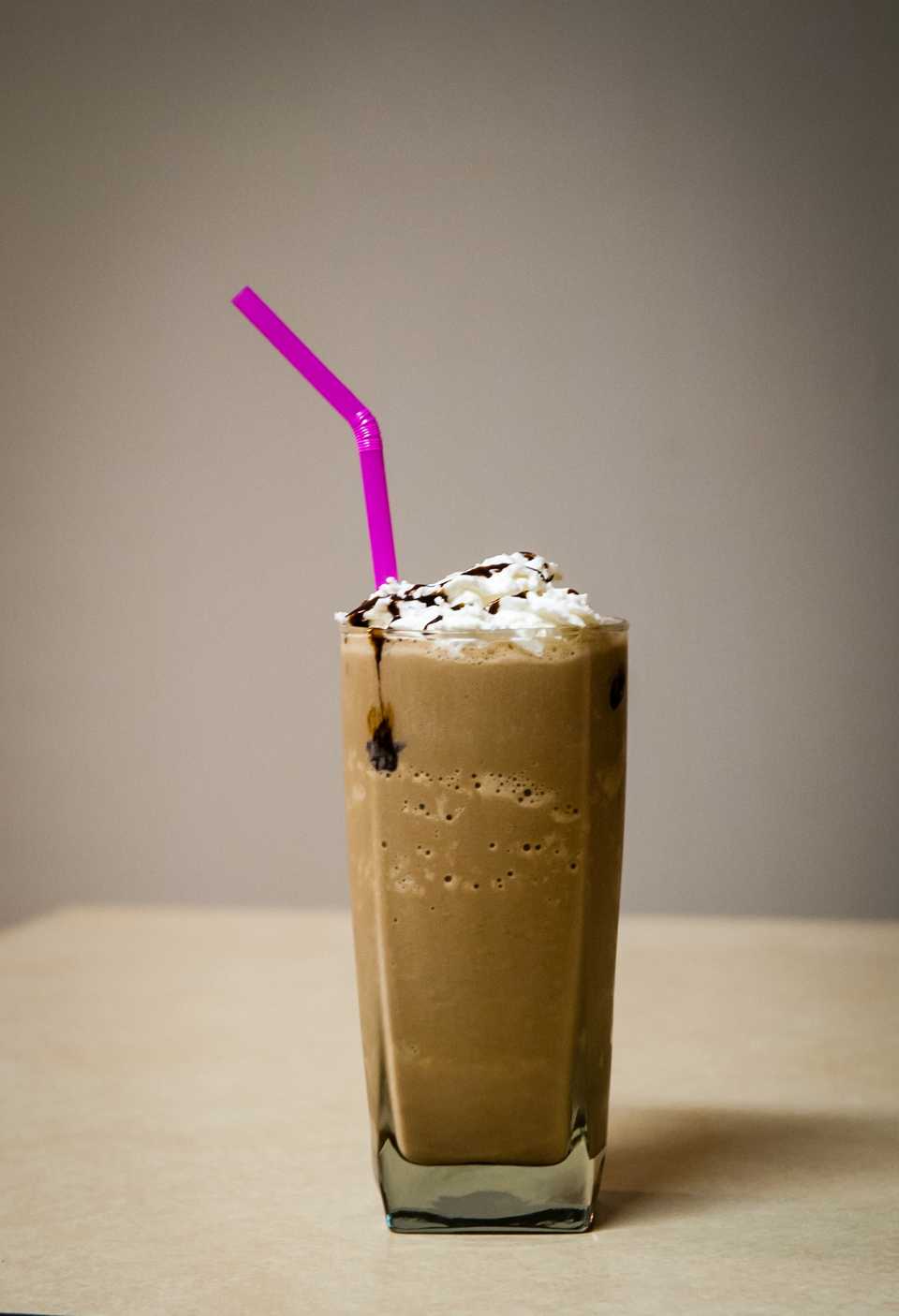I love coffee. I grew up to its smells and sounds. Based on some first hand but dim childhood memories, and others reinforced by stories told by family elders, I figure my childhood home must have been a house of coffee snobs.
Packets of unroasted coffee beans would be purchased from select dealers, and roasted at home to a fine degree of precision. Then they would be hand ground using a mechanical coffee grinder painted in an old school green antirust paint. Then the fresh grounds would be used to prepare the decoction by leaving them soaked in hot (but not boiling) water, in a South Indian coffee percolator. Once dripped, the decoction would be mixed with hot (but not too hot) milk, frothed and then served to the important members of the house in a stainless steel tumbler and davarah (a saucer with high side walls and a lip). How often the beans were purchased, the quantity of beans that were roasted and ground at a time, how long after dripping the decoction could be used for — all these questions had precise answers which were followed to a ‘T’.
Once in a while the mask would come off though, and some one would quip that they would much rather just buy coffee powder than go through this elaborate ritual, if only it worked out a bit cheaper. But, “shush, lest the important members of the house hear!” I probably had my first taste of coffee at six or seven — a mild brew with a lot of milk and sugar with the decoction added just to colour it brown. I must have loved it since I have no memory of ever not liking coffee! Then maybe at ten or eleven I had the pleasure of getting acquainted with the grown-up coffee, as part of the traditional South Indian breakfast, at a wedding or some other family event. It was quite a bitter and potent brew, but I was so proud to stand next to the grown-ups and slurp.
Times changed quite soon though. It became quite convenient and cheap to just buy the coffee powder. Besides, with families becoming smaller and nuclear, people didn’t have so much time on their hands to carry out all the rituals of coffee making. Then came the bane of chicory. While coffee powder comes from the beans (seeds of the coffee berries), chicory powder comes from the root of the chicory plant. Although there is some similarity in taste (both are bitter), chicory does not have caffeine. Now this should make chicory quite the thing, but for its history and social association. While chicory may taste somewhat similar to coffee at a superficial level, taste is a pretty complex and multi-layered sensation. So, chicory does taste quite different from coffee in the way it “lights up” different parts of your tongue and particularly so, in the after taste. This being exactly the kind of thing snobs could derive their snobbery from, chicory got quickly relegated to its use as a way of stretching your coffee supply.
While you could get pure unroasted coffee beans and ritually prepare your coffee powder, you could also buy the powder at about the same price or even lower, if you didn’t mind a bit of chicory in it. This started the era of chicory-blended coffees, ranging from the premium 90:10 blend (the ratio of coffee to chicory) to the aspirational 57:43 and even the ostensibly inferior 53:47 — gotta love those ratios! All of this was stuff happening behind the scenes really, as I was too young to fathom these developments and quite content to keep drinking the brew being served up at home. Then for reasons that I cannot exactly recall, we started drinking a lot more tea. Mind you, we drank tea regularly in our household too, also prepared equally meticulously by pouring boiling water on the tea leaves (and not the other way around), and adding milk that was separately heated (not boiled), after the tea was strained. But, it had been strictly runner-up. But then, from more tea, it soon went to no coffee, and at one stage even instant coffee! Seriously, instant coffee in a household that was roasting its own coffee!
Anyway, in matters involving coffee and chicory, there was also no dearth of subterfuge. When important guests arrived at the household, it was essential to serve them the proper beverage. The rush to find the stash of coffee powder, unwittingly hidden owing to months of preferential treatment to tea, the exasperation on discovering the coffee filter lid had jammed shut, the abandonment of almost all hope on opening it and finding unsavoury stains and smells on the filter — these hurdles were not enough to deter the keeping up of appearances. A smaller back up coffee filter would be retrieved, the decoction prepared, the milk added and as a final touch, some instant coffee would be stirred into the beverage to render the proper colour. Most of the times, the important guests with equal interest in not letting the scene down, would bellow with faultless enthusiasm, “Now that’s what I call proper filter coffee!” At some other times, it would be a chicory blend being passed off as pure filter coffee, in the fervent hope that the guests would not be able to taste the chicanery. Mind you, such episodes only happened in other people’s houses, not mine, in case you were wondering.
Then I started college and my coffee snobbery nose-dived further. Living in a hostel, with no real options available on campus and in the hostel mess, I started drinking, in the name of coffee, any brown liquid that didn’t taste like tea, or at least wasn’t called tea. But if you think I couldn’t be any more of an antithesis of a coffee snob than this, I also happened to develop the misapprehension that an espresso was some sort of a frothy milkshake!
Thankfully that was the lowest point of my coffee snob quotient. It all changed one fateful evening. Having been told by a waiter, in the most obsequious possible way, that espresso was black coffee, but in plain hearing of my companions at the coffee shop, I must have turned multiple shades of red before gulping and mustering a last ditch attempt to salvage some coffee pride, “Oh, yeah, yeah, I’ve changed my mind. I’ll have the… latte, please!” Then I was just struggling to keep my face expressionless, while minutely studying those of my friends wondering if they could smell the chicanery, while also hoping “this latte concoction better have some milk in it”. Later I sat up all night (and not because of the coffee), got myself educated in all manner of coffee terms (ok, maybe it was because of the coffee), restored some of my self-esteem and swore that I would never be embarrassed about coffee again!
Life was good to me from then on. You know, I moved up pretty quickly. I bought myself an electric coffee maker when I was sharing an apartment with friends while pursuing graduate studies. I also learned how to order at an American coffee shop which included emphasising that I wanted to “have it here” so they would bring out the ceramic cup and not the paper one, and that I wanted “room for cream” so I could top up my brew with half and half to add a bit of body to the thin black brew, bringing it a bit closer in feel to the South Indian filter coffee. It kept getting better too. I moved from store brand coffee to fancier offerings, from drip coffee to the occasional moka pot or French press, and so on.
Then I discovered this amazing subscription scheme where they would mail me packets of the finest curated blends of coffee every fortnight. Despite my limited stipend, I enrolled. But then I also found out that the guy who couldn’t tell the difference between Fog Lifter and the house blend, already knew about the scheme and had even tried it for a while! This was a blow to me but I took it in my stride. I proceeded to cancel my subscription and started purchasing even more expensive single origin coffees. Oh, they were good! Some were best enjoyed black, while others were quite agreeable with a bit of milk, but they all lit up your tongue in subtly different ways, if prepared at the right strength. It took some keeping up — no milk for that one, only 2 scoops a cup for this one, but 4 scoops a cup for the other one, and that sort of thing. You almost needed to have a coffee to prepare the coffee. Over time, rationality and rationing prevailed, and I settled on a mix of ordinary and gourmet coffees.
Then (which is now) I hit the plateau of snobbery. I still love coffee, and it is very much a part of my life. From time to time, I lose the pleasure of a coffee companion when they are on a course of Homeopathic medicine. But I don’t mind it so much when I learn new things about it — like the difference between Arabica and Robusta, or between peaberry and regular beans, or what cold press coffee is. My current favourite method of preparation is American style drip coffee with a bit of milk and sugar. But I drink regular black coffee, espresso, americano or cappuccino too. I don’t even mind the odd chicory blended drink. Yeah, coffee is good. If you fancy it a bit too, go on and have a nice cup! Cheers!
PS: As you may have figured out, some events have been treated with a bit of creative license for the purpose of general amusement. For example, I never had any misconceptions about espresso. Honest!
